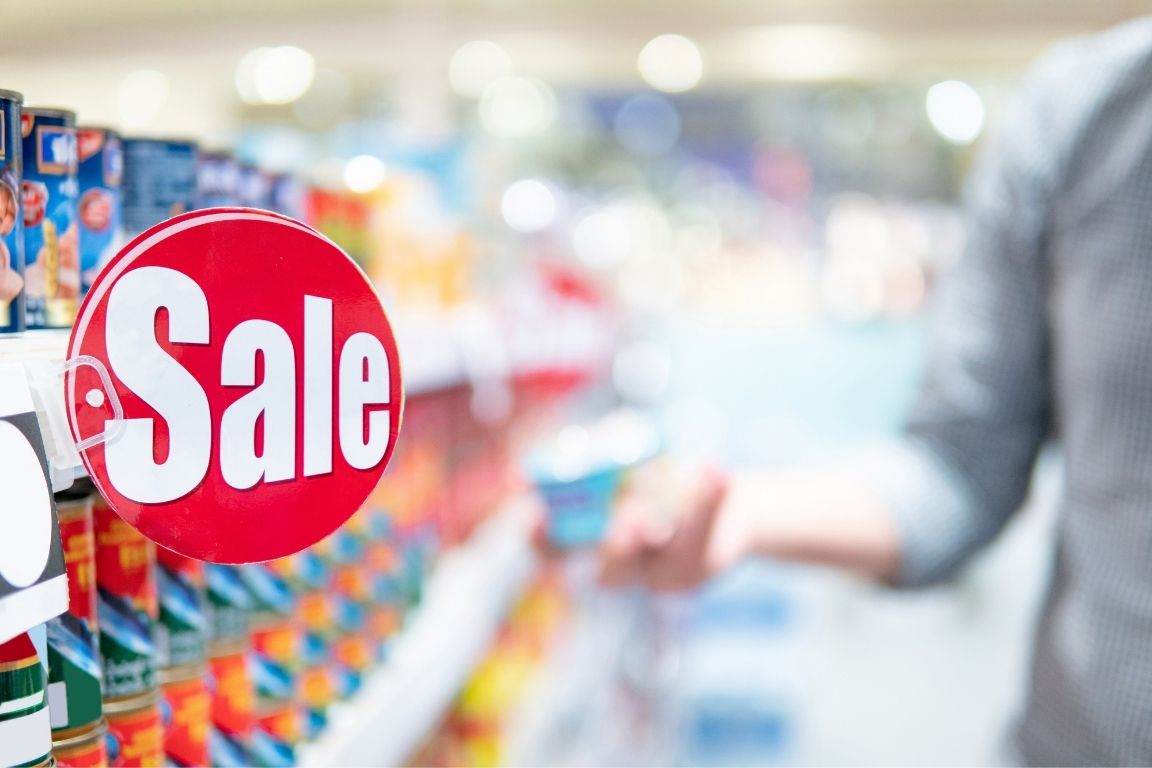The popularity, effectiveness, and traceability of internet marketing has rendered traditional forms of marketing—such as print ads, mailers, coupons, and in-store promotions—nearly obsolete. Marketing online has its perks, but when you’re selling your products straight off the shelves, it’s better to have customers notice them in-store, in the moment. You might wonder: how do you get your product noticed once it’s on the shelf? Let’s look at some simple, effective ways to promote a product in-store and how these methods can translate into noticeability and profits for your brand.
Upsell With Signage
Signage is an effective way to target consumers in-store. A point of purchase display, also known as point-of-sale advertising, is a temporary, semi-permanent, or permanent sign or standee that’s displayed inside retail stores. This type of signage can influence existing customers of your brand by encouraging them to purchase your product again, potentially in bulk. Looking to attract new customers? POP signage can do that, too. You can use in-store signage to promote your brand or shine a spotlight on a specific product, such as a new release or top-selling item. When you’re picking out signage for your brand and product, make sure you’re getting the right type. These displays come in multiple styles, including banners, window signage, and floor displays.
Offer Promotions
Another way to promote a product in-store is to offers deals and promotions. If there’s one thing customers love, it’s saving money. Offering a discount, bundle, or promotion can help drive sales of a specific product, but before you start offering these perks, you’ll want to weigh the costs and benefits. If the additional sales you’re projecting outweigh the profit loss from the discounted price, a promotion or sale could be beneficial to your overall sales and profit margin. Discounting a product is simple. If you’re interested in trying something bigger, bolder, and more effective, bundling and promotions are the way to go. Unfortunately, they’re also trickier.
When you’re bundling a product with something else, you’ll want to make sure the offer is relevant and tempting. Offering a power drill and a baby onesie together will drive more confusion than it does sales. Pairing books and coffee mugs, on the other hand, is guaranteed to catch people’s attention. You can offer bundles of your own products or try to strike deals with other businesses. When done right, this type of partnership can benefit both of you.
Use Impulse To Your Advantage
People tend to be impulse buyers. If they see something that catches their eye, they might toss it into their cart even if it’s not what they came to the store for. Wondering how to use impulse to your advantage? The answer is straightforward and simple—make your product look good. Before a consumer purchases and tries your product, they judge it based on the packaging. Having packaging that’s eye-catching and attractive will give consumers a positive first impression of your brand. When someone is impulse shopping, they think off the top of their head. If you had a line of packaged products in front of you and had a few seconds to select one of them, how would you choose? Chances are, you’d base your decision on the product’s appearance, not any of the labels or even the brand name associated with it. This goes to show how far well-designed packaging can drive your brand.











